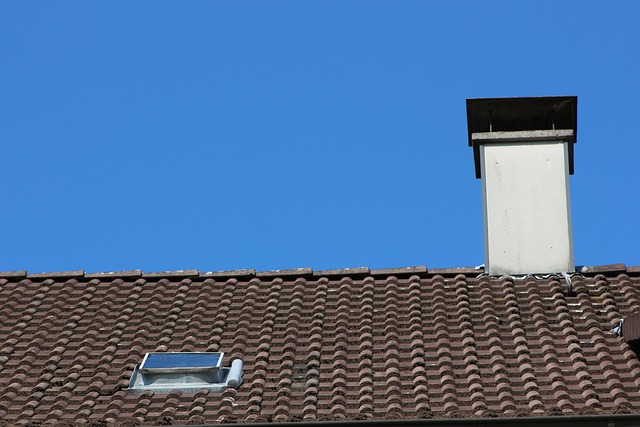Eco-friendly roof solutions, or green roofs, are transforming urban architecture with their environmental benefits and aesthetic appeal. They serve as natural insulators, improve air quality, absorb carbon dioxide, and manage rainwater runoff. Integrated solar systems enhance these advantages by generating clean energy while reducing buildings' carbon footprints. This innovative approach creates vibrant, sustainable cities, promoting biodiversity and improving urban well-being. By combining green roofs and solar panels, architects are revolutionizing urban development with harmonious, efficient, and visually pleasing structures.
“Discover the powerful synergy of green roofs and solar systems—a dual approach to sustainability in urban spaces. This article explores the benefits of integrating these technologies, from mitigating the heat island effect and enhancing air quality to efficiently harnessing renewable energy.
We’ll delve into the environmental advantages of ‘eco-friendly roof solutions,’ examining how these combinations can transform urban landscapes while offering efficient, long-term savings. Uncover the potential for a greener, more sustainable future with these innovative practices.”
Understanding Green Roofs: An Eco-Friendly Approach to Urban Architecture
Green roofs, also known as eco-friendly roof solutions, have emerged as an innovative approach to urban architecture, offering both aesthetic and environmental benefits. This concept involves planting and growing various vegetation on rooftops, transforming what was once a barren surface into a vibrant green space. Beyond their visual appeal, green roofs provide significant advantages for cities and the environment. They act as insulators, helping to regulate building temperatures, reducing the urban heat island effect, and minimizing energy consumption for heating and cooling.
The implementation of green roofs contributes to improved air quality by absorbing carbon dioxide and releasing oxygen, thereby mitigating climate change impacts. Furthermore, these eco-friendly roof solutions can help manage rainwater runoff, preventing flooding and recharging groundwater supplies. By integrating plants and soil into urban settings, green roofs provide habitats for local wildlife, enhancing biodiversity in densely populated areas.
Solar Power Integration: Unlocking Sustainable Energy Potential
Green roofs and solar systems, when integrated, offer a powerful synergy for sustainable living. Eco-friendly roof solutions, such as green roofs, provide numerous environmental benefits by reducing urban heat island effects, improving air quality, and providing habitats for local wildlife. By combining these with solar panels, we unlock the potential for clean, renewable energy generation right in our cities.
Solar power integration enhances the overall sustainability of eco-friendly roof solutions. Solar panels, strategically placed among the vegetative layers of a green roof, can efficiently harness sunlight, converting it into electricity. This not only reduces the carbon footprint of buildings but also provides a reliable source of renewable energy. The symbiotic relationship between green roofs and solar systems creates a sustainable loop where natural processes contribute to energy production while clean energy supports the overall health and longevity of these innovative eco-friendly roof solutions.
Synergies between Green Roofs and Solar Systems: A Match Made for Efficiency
Green roofs and solar systems, when integrated, create a powerful combination that pushes the boundaries of sustainable living. Both eco-friendly roof solutions offer distinct advantages – green roofs provide insulation, mitigate urban heat islands, and support biodiversity while solar panels generate clean energy from sunlight. The true synergy emerges when these benefits are combined.
The reflective surface of a green roof reduces the need for cooling, thereby decreasing energy consumption and carbon emissions, which aligns perfectly with the efficient energy production of solar panels. Additionally, the structural integrity provided by a robust green roof can enhance the longevity and stability of solar installations, ensuring optimal performance over time. This mutually beneficial relationship underscores the potential for urban spaces to become more sustainable and resilient through thoughtfully designed eco-friendly solutions.
Benefits for Urban Environments: From Reduced Heat Island Effect to Improved Air Quality
Green roofs and solar panels, when combined, offer a powerful one-two punch for urban environments, addressing multiple sustainability concerns. One of the most notable benefits is their collective impact on mitigating the heat island effect. Traditional rooftops absorb and retain heat, contributing to elevated city temperatures during hot weather. Eco-friendly roof solutions, however, provide a cooler alternative. The vegetative layer of a green roof absorbs sunlight and reduces heat absorption, while also releasing moisture into the air through transpiration—a natural cooling mechanism that helps lower urban temperatures.
Moreover, these dual systems significantly improve air quality. Solar panels, by harnessing renewable energy from the sun, reduce the carbon footprint associated with conventional power generation. Simultaneously, green roofs act as natural filters, absorbing pollutants and particulate matter from the air as it circulates, enhancing overall urban air quality. This combination of eco-friendly roof solutions not only reduces environmental impact but also contributes to healthier living conditions for city dwellers.
Implementation and Future Prospects: Designing Eco-Friendly Roof Solutions for a Sustainable Tomorrow
The implementation of green roofs, combined with solar systems, presents an exciting avenue for sustainable urban development. Architects and city planners are increasingly recognizing the potential of eco-friendly roof solutions to transform urban landscapes. By integrating lush vegetation and renewable energy sources, these dual systems offer a harmonious balance between aesthetics and functionality.
Looking ahead, the future prospects of such innovations are promising. As technology advances, designers can create more efficient and aesthetically pleasing structures. Incorporating smart design elements allows for optimal sun exposure, enhancing solar panel performance while ensuring green roofs remain vibrant and healthy. This symbiotic relationship between man-made infrastructure and natural ecosystems paves the way for a sustainable tomorrow, where buildings become living, breathing oases within urban environments.
Combining green roofs with solar systems offers a powerful, synergistic approach to urban sustainability. By leveraging both natural and technological solutions, we can create efficient, eco-friendly roof solutions that mitigate environmental impacts while providing long-term energy savings. As cities continue to grow, embracing these dual benefits is crucial for fostering healthier, more sustainable urban environments for the future.
